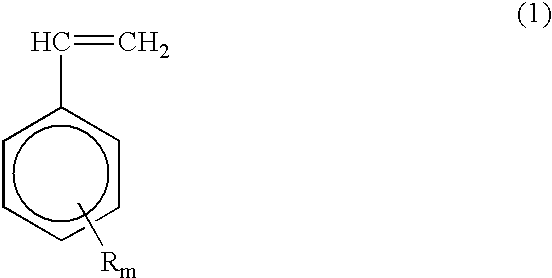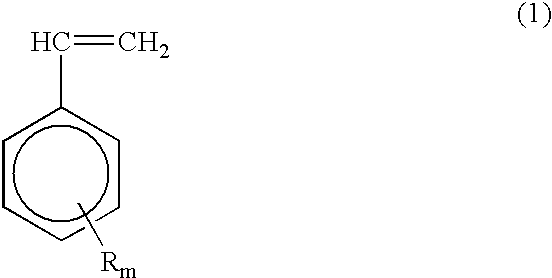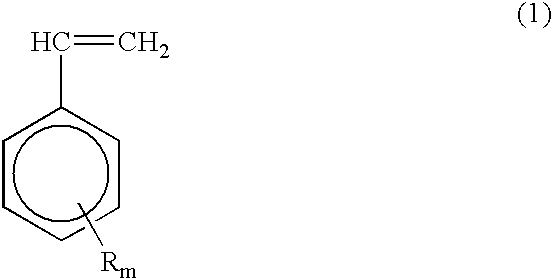Process for producing polymer composition
a polymer composition and polymer technology, applied in the field of polymer composition production process, can solve the problems of methacrylate, acrylonitrile, etc., poor solvent resistance of anionically or cationally polymerizable monomers, etc., and achieve the effects of improving solvent resistance, good moldability, and high impact strength
- Summary
- Abstract
- Description
- Claims
- Application Information
AI Technical Summary
Benefits of technology
Problems solved by technology
Method used
Image
Examples
example 3
Resin pellets were prepared in the same manner as in Example 1 except for using SPS3 in place of SPS1. Properties of the resin thus obtained are shown in Table 1.
example 4
Resin pellets were prepared in the same manner as in Example 1 except for using SPS4 in place of SPS1. Properties of the resin thus obtained are shown in Table 1.
example 5
Resin pellets were prepared in the same manner as in Example 1 except for using styrene in an amount of 87 parts by weight in stead of 82 parts by weight, the low-cis polybutadiene (SV value: 85 mPa.multidot.s) in an amount of 9 parts by weight in stead of 8 parts by weight, and 4 parts by weight of SPS4 in stead of 10 parts by weight of SPS1. Properties of the resin thus obtained are shown in Table 1.
PUM
| Property | Measurement | Unit |
|---|---|---|
| molecular weight distribution | aaaaa | aaaaa |
| pressure | aaaaa | aaaaa |
| temperature | aaaaa | aaaaa |
Abstract
Description
Claims
Application Information
 Login to View More
Login to View More - R&D
- Intellectual Property
- Life Sciences
- Materials
- Tech Scout
- Unparalleled Data Quality
- Higher Quality Content
- 60% Fewer Hallucinations
Browse by: Latest US Patents, China's latest patents, Technical Efficacy Thesaurus, Application Domain, Technology Topic, Popular Technical Reports.
© 2025 PatSnap. All rights reserved.Legal|Privacy policy|Modern Slavery Act Transparency Statement|Sitemap|About US| Contact US: help@patsnap.com



